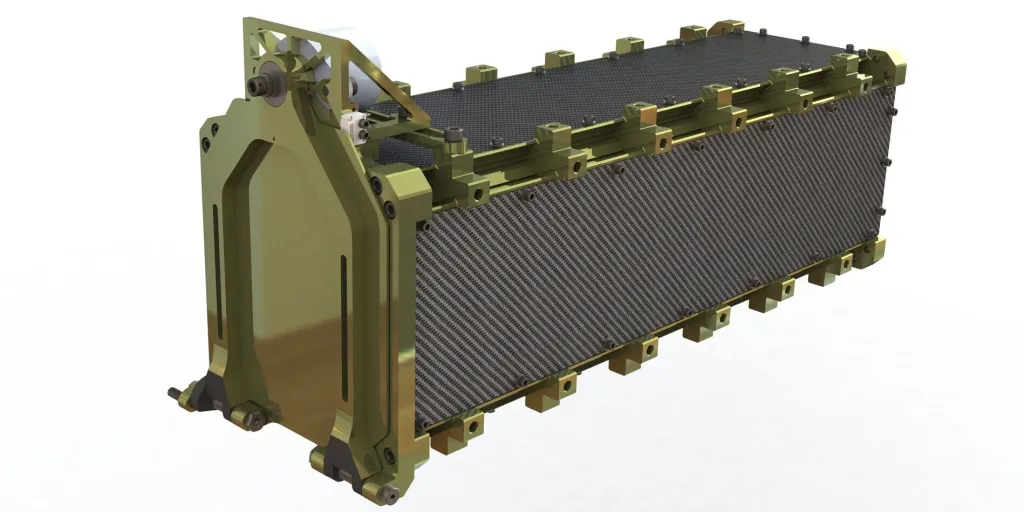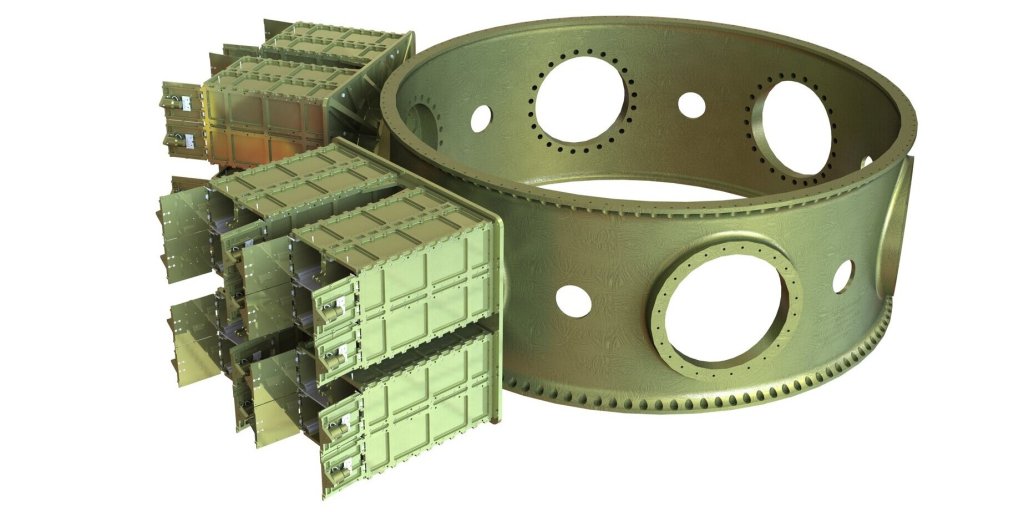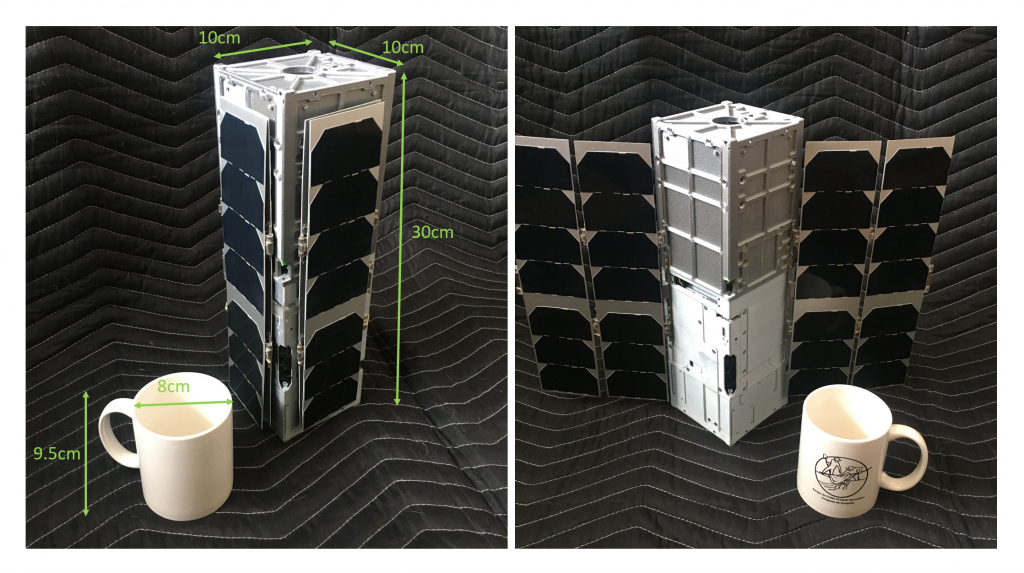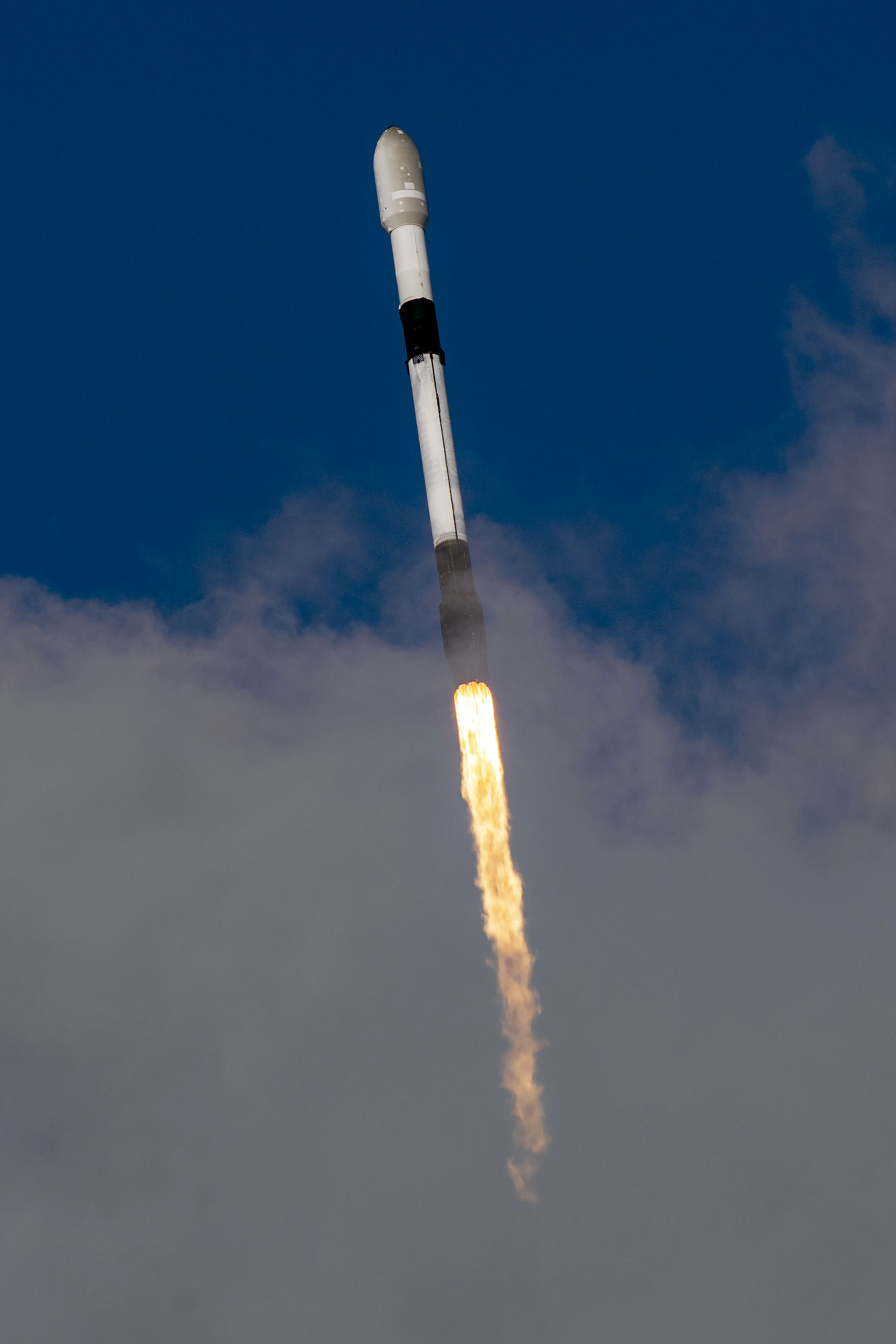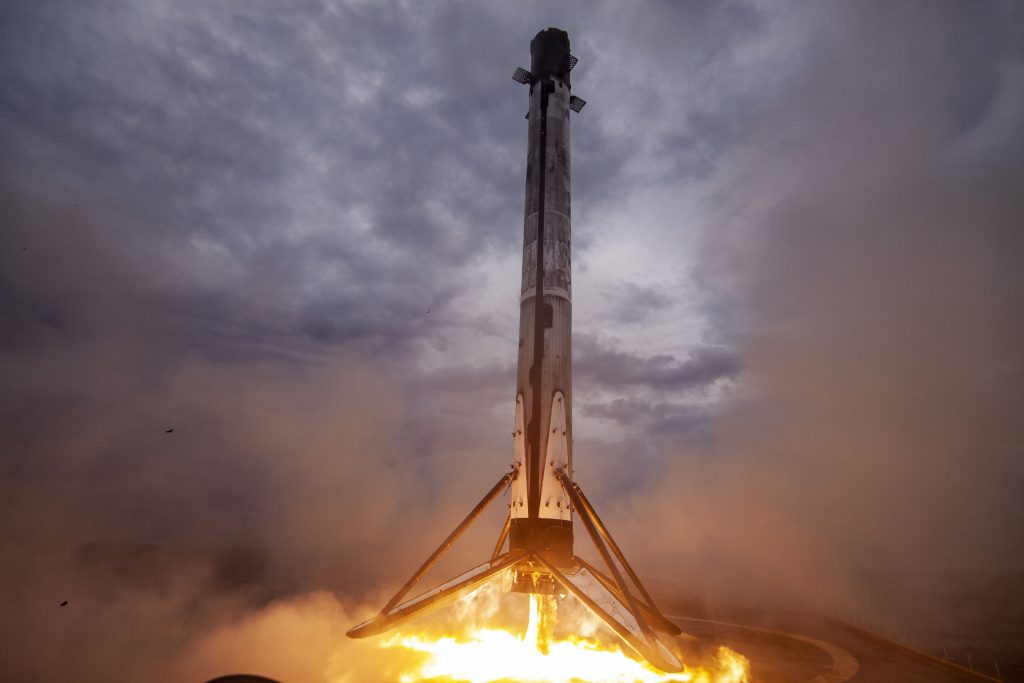Featured image credit: SpaceX
Liftoff Time | April 15, 2023 – 06:48:00.118 UTC April 14, 2023 – 23:48:00.118 PDT |
|---|---|
Mission Name | Transporter-7, the seventh SpaceX dedicated small satellite rideshare mission |
Launch Provider | SpaceX |
Customer | Numerous |
Rocket | Falcon 9 v1.2 Block 5, B1063-10; 56.48-day turnaround |
Launch Location | Space Launch Complex 4 East (SLC-4E), Vandenberg Space Force Base, California, USA |
Payload mass | Unknown, but in the 5,000 kg (~11,100 lb) ballpark |
Where did the spacecraft go? | To Sun-synchronous orbits (SSO): • ~493×507 km (~306×315 mi) at ~97,41° inclination, for most payloads at deployment • 668×679 km (~415×422 mi) at 98,21° inclination, for IMECE |
Did they attempt to recover the first stage? | Yes |
Where did the first stage land? | Back on land, on Landing Zone 4 (LZ-4), at ~400 m (~1,300 ft) from the launch pad |
Did they attempt to recover the fairings? | The fairing halves were recovered from the water ~543 km (~337 mi) downrange by NRC Quest |
Were these fairings new? | No, both of them were flight-proven; 2nd and 5th flights for them |
This was the: | – 217th Falcon 9 launch – 151st Falcon 9 flight with a flight-proven booster – 157th re-flight of a booster – 23rd re-flight of a booster in 2023 – 185th booster landing – 111th consecutive landing (a record) – 24th launch for SpaceX in 2023 – 39th SpaceX launch from SLC-4E – 58th orbital launch attempt of 2023 |
Where to watch | Official replay |
How Did It Go?
SpaceX successfully launched the Falcon 9 v1.2 Block 5 rocket to carry out the seventh dedicated mission of its Smallsat Rideshare Program: Transporter-7. Through this, the company placed a large number of spacecraft of different natures provided by an assortment of clients into orbit. The rocket lifted off from Space Launch Complex 4 East (SLC-4E), located at Vandenberg Space Force Base in California, USA.
After stage separation, the booster performed a burn to change its trajectory and return to where it came from. Following the reentry burn, the first stage touched down onto Landing Zone 4 (LZ-4), close to the launch pad. Meeting its primary goal, the launcher’s second stage successfully deployed the satellites and other vehicles into Sun-synchronous orbits at approximately 493×507 km (~306×315 mi) and ~97,41° in inclination, except for IMECE, deployed at 668×679 km (~415×422 mi) at 98,21° in inclination.
What Is Transporter-7?
To meet the demands of the New Space market, SpaceX developed the Smallsat Rideshare Program — more on it below — Transporter-7 being a part of it. This mission consisted of a flight to a Sun-synchronous orbit, where many satellites and orbital transfer vehicles (OTVs, also called space tugs) would be deployed. Additionally, there were hosted payloads with a purpose of their own and dispensers from different providers.
This Transporter mission’s manifest was not entirely known at the time of writing. It is usually published only very close to the date of liftoff, with last-minute payload additions and stand-downs. However, sources reported this mission would include OTVs from Momentus and D-Orbit. Other integration providers listed were Exolaunch, Maverick, and Alba Orbital. Many entities provided payloads — considering both satellites and hosted ones — making it difficult to thoroughly list them. Nevertheless, we present below what is now known after the flight took place.
Transporter Missions
Typically, this kind of mission implied waiting for a primary payload — a larger one — to be ready for launch. Smallsats would hitch a ride with the launcher booked for the bigger spacecraft. Consequently, these additional passengers had to make do with going into an imposed orbit whenever the large satellite was ready. These factors usually impact their on-orbit performance, unavoidable due to the established launch practices. Moreover, the cost of these rides remained mostly prohibitive for small entities like startups or educational institutions.
Contrary to what was back then believed, SpaceX realized that lowering costs, offering more frequent launches, and attempting to loft spacecraft to more convenient orbits, the smallsat segment of the market could prosper.
Thus, in 2019, the firm announced the offering of rideshare flights aboard its Falcon 9 for such customers, addressing their needs. These would come in two different ways: sharing the room inside the fairing on Starlink missions, or through dedicated rideshare missions named Transporter. Both options are part of the Smallsat Rideshare Program.
Leveraging Falcon 9’s mass to orbit capabilities, a rocket supporting a Transporter mission would see its payload volume subdivided. Interested customers could buy a portion of it as needed, for a much more affordable price. Furthermore, these missions would be regularly scheduled, allowing better in-advance planning, regarding launch date and destination orbit. In spite of this, any payload missing launch day could re-book, paying a small additional fee.
SpaceX offers Transporter launches to low-Earth orbit (LEO), polar LEO, and — its most popular ride — to SSO. In fact, mid-inclination launches have only taken place through Starlink flights, while all past Transporter missions have been to SSO. Revisiting the same spot on Earth’s surface always at the same time of the day — offered by this type of orbit — turns it into a preferred destination.
Transporter Logistics
From the need for a particular product or service to arriving at the desired orbit and operating the spacecraft, many are involved in one of these missions. To avoid getting lost in the logistics of one of these missions, it can be thought of in a simplified manner as follows:
- Customer and spacecraft manufacturers: those interested in having a payload in space and those who provide the platform, the instruments on board, or both (the payload itself).
- Launch/integration service providers: those who broker rideshare flights, offer last-mile trips (via space tugs), care for meeting regulations, provide dispensers or separation systems, and so on.
- Launch provider: SpaceX, responsible for the launch itself and correctly reaching the intended deployment orbit.
This structure will be reflected in a subsequent section of this article when payloads are listed and discussed.
Mechanical Interfaces — Plates
Apart from the logistics aspect, the company also designed specific hardware to integrate payloads. These need an interface to the launch vehicle, provided through rideshare plates, conceptually similar to ESPA rings. Each of these plates can be arranged in these configurations: square — four plates — or hexagon — six of them. The former allows for more available volume than the latter.
In turn, the volume corresponding to each of those can be subdivided, using a quarter of the plate, half of it, or full use. These portions enable unique payload accommodations — e.g., a CubeSat dispenser — or standard ports in three different diameters, as follows.
| Volume Subdivision | 8 in (~20.3 cm) | 15 in (~38.1 cm) | 24 in (~61.0 cm) |
|---|---|---|---|
| 1/4 Plate | Yes | – | – |
| 1/2 Plate | Yes | Yes | – |
| Full Plate | – | Yes | Yes |
| Full Plate XL | – | – | Yes |

Cake Topper
Yet another position to integrate payloads in a rideshare is available at the top of the plate stack. This upper mount enables spacecraft massing from 500 kg to 2,500 kg to be launched during a shared flight. If required, two of them can be placed side-by-side. In any case, because of the different disposition, a whole separate set of requirements need to be observed when flying as a cake topper.
Previous Missions
| Mission | Date & Time | Orbit | Pad |
|---|---|---|---|
| Transporter-1 | 2021-01-24 15:00 UTC | ~528 km x 97.5° | SLC-40 |
| Transporter-2 | 2021-06-30 19:11 UTC | ~538 km x 97.5° | SLC-40 |
| Transporter-3 | 2022-01-13 15:25 UTC | ~528 km x 97.5° | SLC-40 |
| Transporter-4 | 2022-04-01 16:24 UTC | ~644 km x 97.5° ~503 km x 97.5° | SLC-40 |
| Transporter-5 | 2022-05-25 18:35 UTC | ~528 km x 97.5° | SLC-40 |
| Transporter-6 | 2023-01-03 14:56 UTC | ~525 km x 97.5° | SLC-40 |
Payloads On Transporter-7
36 separation events will take place from Falcon 9’s second stage. Moreover, the company confirmed 51 payloads, including OTVs, microsats, CubeSats, and hosted payloads. A list of the payloads SpaceX is sending to space on this Transporter mission, showing type and quantity is as follows.
| OTVs: 2 | Deployers: 13 | Satellites: 47? | Hosted: 2 |
A more detailed description is presented here:
Momentus Inc.
Based in the USA, this company offers vehicles capable of transporting satellites between orbits, i.e., space tugs. So far, the company has projected three increasingly more capable vehicles: Vigoride, Ardoride, and Fervoride. To this date, only Vigoride flew on two demonstration missions: Vigoride-3 did so on Transporter-5, while Vigoride-5 on Transporter-6. This time is Vigoride-6’s (VR-6) turn.
Vigoride
This OTV offers a payload capacity of 750 kg, as well as 2 km/s of delta v. This change in velocity can be applied to increasing orbital altitude up to 2,000 km. Another possibility is to modify orbital inclination up to 7°. The satellites traveling on this space tug have access to electrical power, and communications. For its propulsion, Vigoride features a microwave electrothermal thruster, which uses water as propellant.
LLITED-A/B
Low-Latitude Ionosphere/Thermosphere Enhancements in Density (LLITED) is a mission part of NASA’s CubeSat Launch Initiative. Consisting of two 1.5U spacecraft, the agency assigned it the Educational Launch of Nanosatellite (ELaNa) number 40. Their development was a collaboration between The Aerospace Corporation (TAC), Embry-Riddle Aeronautical University (ERAU) in Florida, and the University of New Hampshire (UNH).
Each of these very small satellites have an outside size of 11x11x17 cm (~4.3×4.3×6.7 in) and a mass of 1.97 kg (~4.4 lb) each. The walls are made of aluminum, and they use both magnetic torque rods and tiny reaction wheels to achieve attitude control. Neither LLITED presents any thruster, while their electrical power is obtained through unfoldable solar arrays producing up to 15 W. Two Li-ion batteries per spacecraft store this power, allowing for a 1-year mission life.
The LLITED mission is to study Earth’s atmosphere, particularly the interaction between layers that are electrically charged, and others that are not — the lower thermosphere/ionosphere (100 km to 500 km in altitude). More precisely, the mission will provide a better understanding of the Equatorial Ionization Anomaly (EIA) and the Equatorial Temperature and Wind Anomaly (ETWA).
Consequently, the “A” and “B” sats will take measurements of the same point, from two different places, studying temperatures and winds. In order to do that, they contain a GPS radio occultation sensor (CTECS-A) by TAC, an ionization gauge (MIGSI) by NHU, and a planar ion probe (PIP) by ERAU. In addition, they will make these observations between a quarter to half an orbit away.
The knowledge gained from this mission will enable the creation of better models — mathematical descriptions — of our planet’s atmosphere.
Other Payloads On Vigoride-6
| Name | Quantity | Purpose |
|---|---|---|
| REVELA | 1 | 3U sat for a demo of innovative image processing algorithms. |
| DISCO-1 | 1 | 1U educational CubeSat, experiments for in-orbit testing. |
| VIREO | 1 | 3U satellite, in-space demo of AI-powered camera autonomous driving |
| IRIS-C | 1 | 3U educational sat, aiming at improving university’s both CubeSat bus and ground stations |
| SMPOD03 | 1 | 3U CubeSat deployer (hosted payload) by Italian firm Arca Dynamics. |
| Solar array | 1 | Hosted payload. |
D-Orbit
This aerospace company has its headquarters in Italy, where it started to develop a vehicle capable of deorbiting deceased spacecraft. Later on, it moved to the business of satellite carriers, i.e., space tugs. To this day, the firm has launched their vehicles on all of the previous Transporter missions, as well as on Starlink Group 2-5.
ION
D-Orbit’s OTV can carry up to 160 kg of satellites, being capable of accommodating spacecraft of different shapes and sizes. This means microsats and CubeSat can be transported from the launcher’s drop-off point to other altitudes or inclinations. After this trip, proprietary (DPOD, DCUBE), or third party dispensers deploy the passengers. ION is also capable of supporting hosted payloads, run from the ground as a part of the carrier itself. In this mission, the ION serial number “SCV010” is going to space.
Payloads On ION SCV010
| Name | Quantity | Purpose |
|---|---|---|
| Kepler | 2 | 6U data relay, communications satellites. |
| EPICHyper-1 | 1 | 6U CubeSat. |
| VCUB1 | 1 | Brazilian 6U sat. |
| Alba Cluster 7 | 1 | Deployer. Description in its own tab. |
Exolaunch
The Germany-based company offers a series of services, from payload integration, to deployment, and mission management. In order to provide them, Exolaunch developed products such as separation hardware, CubeSat deployers, payload port adapters, deployment sequencers, and it is projecting an OTV named Reliant. Notably, the firm has all previous Transporter missions under its extensive flight heritage.
Deployment Systems
In order to better fit customers’ needs, Exolaunch may assign one or many of its deployment systems. These include:
- CarboNIX: this is a shock-free separator system capable of handling microsats massing in the range of 10 kg to 250 kg. To ensure this, different standard sizes are offered, as well as customization. Four of these rings will be used in this mission.
- EXOpod: flying since 2017, these deployers have evolved to host all sorts of cubesat sizes, from 0.25U all the way up to 16U, allowing, in addition, for some combination. In this mission, six EXOpod Novas are installed inside the fairings.
- EXOport: two of these multiport adapters will fly on Transporter-7, enabling the use of one port on a rideshare plate for a whole CubeSat cluster. A combination of the previous two systems can be used for satellite deployment.
Payloads Integrated By Exolaunch
| Name | Quantity | Purpose |
|---|---|---|
| Taifa-1 | 1 | 3U Kenyan Earth observation CubeSat. |
| Sateliot-0 | 1 | 6U CubeSat, also known as Platform-3. |
| FACSAT-2 | 1 | Colombian 6U defense CubeSat, also known as Chiribiquete. |
| Connecta T2.1 | 1 | Turkish Plan-S’ 6U Earth observation satellite. |
| Sapling-2 | 1 | Educational, bus and swarm demonstration. |
| BRO-9 | 1 | 6U maritime surveillance sat: geolocation and characterization of vessel type. 9th in the constellation. |
| LEMUR-2 | 2 | 6U CubeSats, for customers. |
| LEMUR-2 | 1 | 3U CubeSat. |
| NorSat-TD | 1 | Norway’s Space Agency’s demo for satellite control, tracking, navigation, communication, and maritime traffic monitoring. |
| InspireSat 7 | 1 | Sorbonne University’s 2U Earth observation CubeSat. |
| DEWA SAT-2 | 1 | 6U Earth observation CubeSat for water and electricity infrastructure monitoring. |
| RoseyCubesat-1 | 1 | 1U educational sat, high-school students take part in assembly, integration, and testing. Imaging and amateur radio. |
| SSS-2B | 1 | 3U CubeSat. |
| ÑuSat 36-39 | 4 | Satellogic’s ~40 kg Earth observation microsatellites. |
| Brokkr-1 | 1 | 6U sat for an in-space refinery demonstration, also named ORBASTRO-AF-1. |
| LS2F | 1 | Unknown. |
| Pleiades Squared | 1 | Educational, Bronco Space (Cal Poly Pomona). |
Maverick Space Systems
Offering mission engineering and launch-related services, this US private company serves both commercial and government clients, who can be domestic or international. It was founded in 2019, and since then it took part in, at least, the first two Transporter missions. The firm developed a family of CubeSat dispensers named Mercury, as well as other payload aggregation hardware for rideshare missions.
CIRBE
Another mission is part of NASA’s CubeSat Launch Initiative: the Colorado Inner Radiation Belt Experiment (CIRBE). It consists of a 2U satellite, given the Educational Launch of Nanosatellite (ELaNa) number 47. The University of Colorado Boulder (UCB), particularly the Laboratory for Atmospheric and Space Physics (LASP), was in charge of its development. It aims at measuring the ionization in the inner radiation belt around the Earth.
On the outside, its measurements are 10x10x30 cm (~3.9×3.9×11.8 in), which correspond to the XB1 bus, by Blue Canyon Technologies. It provides the spacecraft with more than 30.4 W of electrical power, thanks to a pair of deployable solar arrays. The platform stores 70 Wh in a Li-ion battery, while its nominal lifetime is five years or more. The XB3 presents capabilities for data storage, as well as for communications with ground stations — over UHF, and a much faster S-band, too. Further, a star tracker, and an inertial measurement unit (IMU) help in correctly pointing the satellite through active attitude control. CIRBE’s total mass is 5.5 kg (~12.2 lb)
Inside the CubeSat there is an instrument named REPTile-2 (Relativistic Electron Proton Telescope integrated little experiment – 2). Its design allows it to measure electrons with an energy of 3 to 3.5 MeV, and 6 to 35 MeV protons. These are present in this region of space, and represent a threat to orbiting satellites, and to astronauts. To carry out its observations, REPTile-2 will always remain perpendicular to the magnetic field it is crossing.
By doing so, it will be possible to further the understanding of the energetic particles in that region, and how the belt is formed. Gaining knowledge of its dynamics will improve useful forecasting for future missions orbiting through this zone.
Other Payloads Integrated by Maverick
| Name | Quantity | Purpose |
|---|---|---|
| GHOSt | 2 | Hyperspectral Earth observation microsatellites for oil pipe leak monitoring. |
| KILICSAT | 1 | Turkish 3U CubeSat for technology demonstration. |
| It’s About Time | 1 | Unknown. |
| Tomorrow-R1 | 1 | Technology demonstration satellite. |
Alba Orbital
Focused on PocketQube design, manufacturing, and deployment, the Scottish Alba Orbital is a thriving start-up. As a launch broker, the company has already flown on vehicles like the Atlas V, the Electron, and the Falcon 9. And because of these satellites being very small, they need to be arranged in clusters, so they travel to space in groups. Presently, Alba Cluster 7 is aboard this Transporter mission.
Albapods are the PocketQube dispensers designed by this firm, allowing them to deploy up to 96P of spacecraft. These can be composed of tiny satellites of 1P, 1.5P, 2P, or 3P, which means a full deployment could very well place into orbit a whole constellation at once.
Payloads Integrated By Alba Orbital
| Name | Quantity | Purpose |
|---|---|---|
| ROM-2 Space Sparrow | 1 | RomSpace’s educational 1P picosatellite. Digital amateur radio repeater, imager, beacon. |
| MRC-100 | 1 | BME’s educational 3P picosatellite. Electromagnetic pollution monitoring. |
Other Payloads
| Name | Quantity | Purpose |
|---|---|---|
| İMECE | 1 | This is the cake topper of Transporter-7’s payload stack. Turkey’s first sub-meter-resolution Earth observation satellite. |
| GHGSat-C6/C7/C8 | 3 | High-resolution emission monitoring satellites, massing 15 kg each. |
| Hawkeye 360 Cluster 7 | 3 | RF-based Earth observation satellites, massing 33 kg each. |
| Umbra-06 | 1 | SAR Earth observation satellite. |
| CACI Demosat | 1 | Signal intelligence microsatellite. |
What Is Falcon 9 Block 5?
The Falcon 9 Block 5 is SpaceX’s partially reusable two-stage medium-lift launch vehicle. It consists of a reusable first stage, an expendable second stage, and, when in payload configuration, a pair of reusable fairing halves.
First Stage
Falcon 9’s first stage contains nine Merlin 1D+ sea-level engines. Each engine uses an open gas generator cycle and runs on RP-1 and liquid oxygen (LOx). Each engine produces 845 kN of thrust at sea level, with a specific impulse (ISP) of 285 seconds, and 934 kN in a vacuum with an ISP of 313 seconds. Due to the powerful nature of the engine, and the large amount of them, Falcon 9’s first stage is able to lose an engine right off the pad, or up to two later in the flight, and still be capable of successfully placing the payload into orbit.
The Merlin engines are ignited by triethylaluminum and triethylborane (TEA-TEB), both of which instantaneously burst into flames when coming in contact with oxygen. During static fire and launch the TEA-TEB is provided by the ground service equipment. However, as Falcon 9’s first stage is able to propulsively land, three of the Merlin engines (E1, E5, and E9) contain TEA-TEB canisters to relight for the boost back, reentry, and landing burns.
Modified Descent Profile On Transporter-7
Because of the use of a shorter nozzle extension on the second stage, SpaceX decided to follow different sequences during the burns enabling the return-to-launch-site (RTLS) landing. The entry burn, usually performed by three engines, this time used only one. On the other hand, the final burn, normally carried out by the center M1D+ alone, used a 1-3-1 sequence for this mission. This kind of approach is not new, but before Transporter-7 it had only been used by Falcon Heavy’s lateral boosters.
The idea behind this sequence is to consume less propellants for the landing, as a consequence of generating more thrust, decreasing gravity losses. However, the resulting increased accelerations would mean higher loads onto the stage’s structure. All of this is explained by the Everyday Astronaut in this section of his video Why does Starship belly flop?
Second Stage
The Falcon 9 second stage is the only expendable part of the Falcon 9. It contains a singular MVacD engine that produces 992 kN of thrust and an ISP of 348 seconds. The second stage is capable of doing several burns, allowing the Falcon 9 to put payloads in several different orbits.
For missions with many burns and/or long coasts between burns, the second stage is able to be equipped with a mission extension package. When the second stage has this package it has a grey strip, which helps keep the RP-1 warm, an increased number of composite-overwrapped pressure vessels (COPVs) for pressurization control, and additional TEA-TEB.
New MVacD Nozzle
On Transporter-7, the rocket’s second stage will implement for the first time a new nozzle extension. In spite of being shorter than the one used so far, it will allow for higher launch cadence. On the other hand, it will also represent a decrease in manufacturing costs. The vehicle will only use it for missions which do not require all of its performance, as it becomes evident from this new engine part being shorter, and, hence, less efficient.
Falcon 9 Booster
The booster supporting the Transporter-7 mission was B1063-10; as the name implies, the booster had flown nine previous times. The booster’s designation changed to B1063-11 upon successful landing.
| B1063’s missions | Launch Date (UTC) | Turnaround Time (Days) |
|---|---|---|
| Sentinel-6 | November 21, 2020 17:17 | N/A |
| Starlink V1.0 L28 | May 26, 2021 18:59 | 186.07 |
| DART | November 24, 2021 06:21 | 181.47 |
| Starlink Group 4-11 | February 25, 2022 17:12 | 62.45 |
| Starlink Group 4-13 | May 13, 2022 22:07 | 108.20 |
| Starlink Group 3-1 | July 11, 2022 01:39 | 58.15 |
| Starlink Group 3-4 | August 31, 2022 05:40 | 51.17 |
| Starlink Group 4-31 | October 28, 2022 01:14 | 57.82 |
| Starlink Group 2-5 | February 17, 2023 19:12 | 112.75 |
| Transporter-7 | April 15, 2023 6:48 UTC | 56.48 |
Following stage separation, the Falcon 9 conducted three burns. These burns allowed it to softly touch down the booster on SpaceX’s Landing Zone 4 (LZ-4).
Falcon 9 Fairings
The Falcon 9’s fairing consists of two dissimilar reusable halves. The first half (the half that faces away from the transport erector) is called the active half, and houses the pneumatics for the separation system. The other fairing half is called the passive half. As the name implies, this half plays a purely passive role in the fairing separation process, as it relies on the pneumatics from the active half.
Both fairing halves are equipped with cold gas thrusters and a parafoil which are used to softly touch down the fairing half in the ocean. SpaceX used to attempt to catch the fairing halves, however, at the end of 2020 this program was canceled due to safety risks and a low success rate. On Transporter-7, SpaceX successfully recovered the fairing halves from the water with their recovery vessel NRC Quest.
In 2021, SpaceX started flying a new version of the Falcon 9 fairing. The new “upgraded” version has vents only at the top of each fairing half, by the gap between the halves, whereas the old version had vents placed spread equidistantly around the base of the fairing. Moving the vents decreases the chance of water getting into the fairing, making the chance of a successful scoop significantly higher.
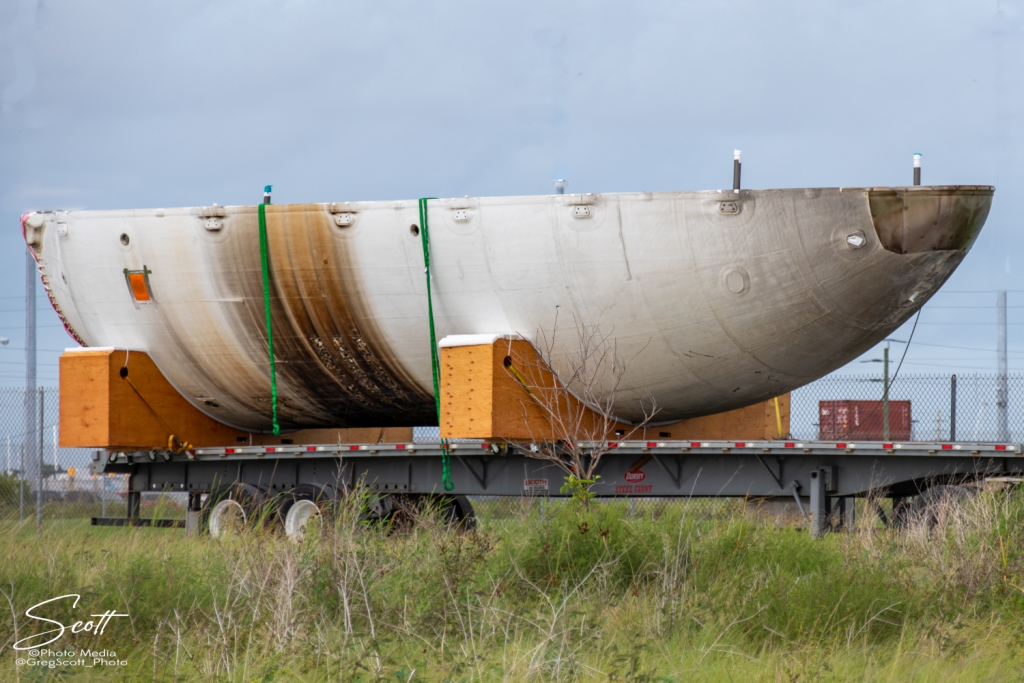

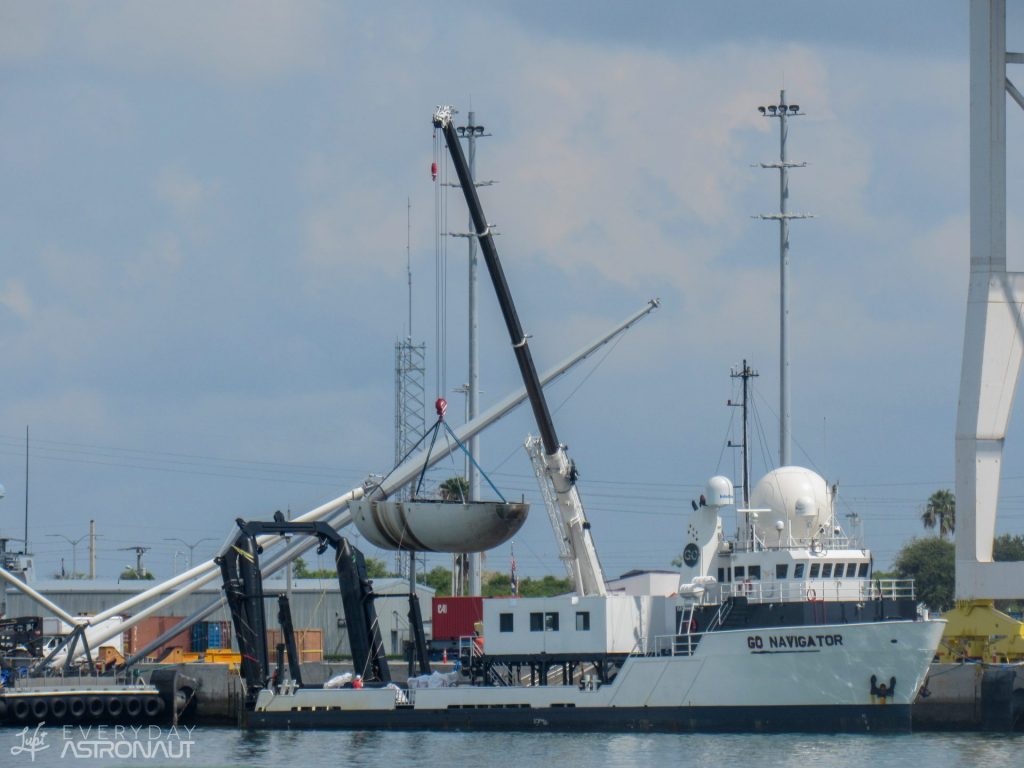
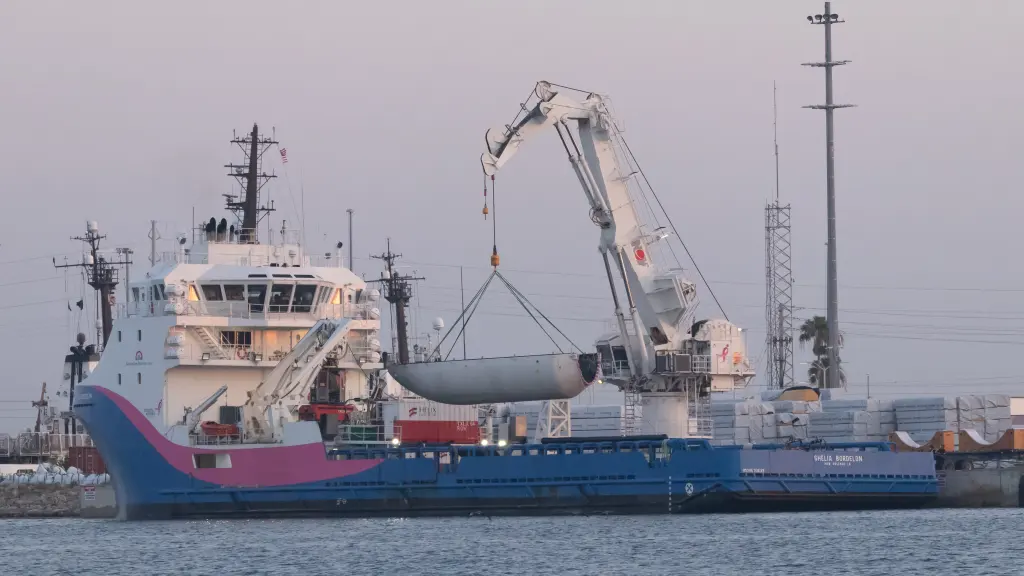
Transporter-7 Countdown
All times are approximate
| HR/MIN/SEC | EVENT |
|---|---|
| 00:38:00 | SpaceX Launch Director verifies go for propellant load |
| 00:35:00 | RP-1 (rocket grade kerosene) loading underway |
| 00:35:00 | 1st stage LOX (liquid oxygen) loading underway |
| 00:16:00 | 2nd stage LOX loading underway |
| 00:07:00 | Falcon 9 begins engine chill prior to launch |
| 00:01:00 | Command flight computer to begin final prelaunch checks |
| 00:01:00 | Propellant tank pressurization to flight pressure begins |
| 00:00:45 | SpaceX Launch Director verifies go for launch |
| 00:00:03 | Engine controller commands engine ignition sequence to start |
| 00:00:00 | Falcon 9 liftoff |
Launch, Landing, And Deployment
| HR/MIN/SEC | EVENT |
|---|---|
| 00:01:05 | Max Q (moment of peak mechanical stress on the rocket) |
| 00:02:18 | 1st stage main engine cutoff (MECO) |
| 00:02:20 | 1st and 2nd stages separate |
| 00:02:30 | 2nd stage engine starts (SES-1) |
| 00:02:35 | 1st stage boostback burn begins |
| 00:03:01 | Fairing deployment |
| 00:03:30 | 1st stage boostback burn ends |
| 00:06:11 | 1st stage entry burn begins |
| 00:06:25 | 1st stage entry burn ends |
| 00:07:19 | 1st stage landing burn begins |
| 00:07:36 | 1st stage landing |
| 00:08:19 | 2nd stage engine cutoff (SECO-1) |
| 00:57:48 | 2nd stage engine starts (SES-2) |
| 00:57:50 | 2nd stage engine cutoff (SECO-2) |
| 01:01:02 | C6 – Mey-Lin deploys, manifested by GHGSat |
| 01:01:17 | SSS-2B deploys, manifested by Exolaunch |
| 01:01:25 | C8 – Oceane deploys, manifested by GHGSat |
| 01:01:37 | DEWA-SAT 2 deploys, manifested by Exolaunch |
| 01:01:48 | KILICSAT deploys, manifested by Maverick Space Systems |
| 01:02:04 | OrbAstro-AF-1 deploys, manifested by Exolaunch |
| 01:02:17 | BRO-9 deploys, manifested by Exolaunch |
| 01:02:30 | LEMUR 2 ONREFLECTION deploys, manifested by Exolaunch |
| 01:02:59 | C7 – Gaspard deploys, manifested by GHGSat |
| 01:03:46 | TAIFA-1 deploys, manifested by Exolaunch |
| 01:04:08 | Connecta T2.1 deploys, manifested by Exolaunch |
| 01:04:20 | Sapling deploys, manifested by Exolaunch |
| 01:04:34 | LS2f deploys, manifested by Exolaunch |
| 01:04:47 | FACSAT CHIRIBIQUETE deploys, manifested by Exolaunch |
| 01:05:00 | ROSEYCUBESAT-1 and Inspire-Sat deploy, manifested by Exolaunch |
| 01:05:12 | Blue Dot Consortium: Pleiades – Squared deploys, manifested by Exolaunch |
| 01:06:04 | It’s About Time deploys, manifested by Maverick Space Systems |
| 01:06:17 | CIRBE deploys, manifested by Maverick Space Systems |
| 01:07:09 | Sateliot-0 deploys, manifested by Exolaunch |
| 01:07:22 | LEMUR 2 SPACEGUS deploys, manifested by Exolaunch |
| 01:08:38 | LEMUR 2 ROMEO-N-LEO deploys, manifested by Exolaunch |
| 01:09:45 | NewSat 36 deploys, manifested by Satellogic |
| 01:11:04 | NewSat 37 deploys, manifested by Satellogic |
| 01:11:58 | NewSat 38 deploys, manifested by Satellogic |
| 01:12:13 | UMBRA deploys, manifested by Umbra Lab |
| 01:12:33 | ALIZER 02 HAWK7B deploys, manifested by Omniteq |
| 01:13:28 | ALIZER 02 HAWK7A deploys, manifested by Omniteq |
| 01:14:26 | ALIZER 02 HAWK7C deploys, manifested by Omniteq |
| 01:14:46 | Tomorrow.io’s Tomorrow-R1 deploys, manifested by Maverick Space Systems |
| 01:15:35 | NorSat-TD deploys, manifested by Exolaunch |
| 01:16:16 | NewSat 39 deploys, manifested by Satellogic |
| 01:16:50 | GHOSt-2 deploys, manifested by Maverick Space Systems |
| 01:17:03 | ION SCV-010 Masterful Matthaeus deploys, manifested by D-Orbit |
| 01:20:45 | GHOSt-1 deploys, manifested by Maverick Space Systems |
| 01:22:09 | VIGORIDE6 deploys, manifested by Momentus |
| 01:46:15 | 2nd stage engine starts (SES-3) |
| 01:46:16 | 2nd stage engine cutoff (SECO-3) |
| 02:31:09 | 2nd stage engine starts (SES-4) |
| 02:31:10 | 2nd stage engine cutoff (SECO-4) |
| 02:35:19 | Tubitak’s IMECE deploys |












